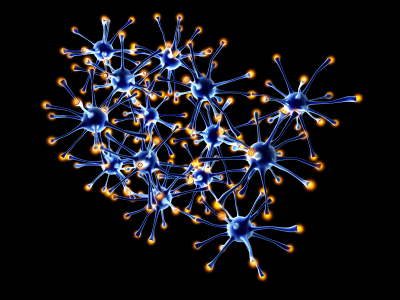 |
| Mycelium Rhizome By Richard Giblett |
- Your brain feels others pain as its own (the same neurons fire for pain you experience yourself and as pain you experience for others)
- The imaginary = the real (your brain lights up the same way for imagined situations as it does for experiences in physical reality)
- Your brain can’t tell physical pain from emotional hurt (the same neurons are activated for both)
- gratitude
- compassion (giving others positivity is like giving it to yourself)
After watching this video, I started to think about how modern technology, especially the Internet, can enhance our emotional experiences, despite being a disembodied platform. Those of us who feel a lot of fear and self-doubt in physical situations probably carry this over to the internet, feeling paranoid about how an online identity is perceived or self-conscious about an online voice. But I think this goes deeper than just transferring our own feelings onto the internet.
Anyone who knows me well, knows that in addition to loving whiteboard videos, I am a mycophile. It’s not uncommon for me to read articles about Mushrooms in my free time. As I did this the other day, I stumbled upon a piece called “Livin’ In a Mycelial World” by Claire Evans, that compared mycelium networks of mushrooms to the networked neurons in the brain, and to the basic structure of the internet. Okay, I could talk about this phenomenon forever, but I’ll get to the point of my realization: the internet is like a universal brain, housing the collective consciousness of humanity.
Anyone who knows me well, knows that in addition to loving whiteboard videos, I am a mycophile. It’s not uncommon for me to read articles about Mushrooms in my free time. As I did this the other day, I stumbled upon a piece called “Livin’ In a Mycelial World” by Claire Evans, that compared mycelium networks of mushrooms to the networked neurons in the brain, and to the basic structure of the internet. Okay, I could talk about this phenomenon forever, but I’ll get to the point of my realization: the internet is like a universal brain, housing the collective consciousness of humanity.
 |
| "Farmers of Fungi" by Dustin Eirdosh: A Mycelium Network |
 |
| "Nueral Connections and the Mind" by Jon Leiff, MD |
 |
"A visualization of the network structure of the internet
by Hal Burch and Bill Cheswick, courtesy of Lumeta Corporation"
featured in Claire Evan's Artice.
|
In light of Dr. Sood’s video, this means that the Internet is a platform for experiencing collective pain. This counters cynical thoughts that I have had before that the internet desensitizes us to injustices or that it doesn’t increase our empathy. According to recent neurological studies, It doesn’t matter if the pain witnessed on the internet isn’t physical, or if the pain isn’t ours, or even if the pain didn’t “really happen”. Our individual brains perceive it all the same. The age old proverb of “treat others the way you wanted to be treated” has never been more real in my mind.
If pain is easily shared through the Internet, this also means that the internet is a platform for us to practice and enhance gratitude and compassion, to make it a “a happier” place as Dr. Sood would say. The key is being mindful about what we add to the mix, because what share, others’ brains will feel. I am inspired after making these connections to make my statuses and posts on the internet reflect gratitude. I am inspired to reach out more to my friends on Social Media to spread positivity. We have an incredible tool at our fingertips, and sharing our ups and downs with our online communities is a way to practice compassion, empathy, gratitude and meaningful connection. The creative possibilities for reaching out are endless.
 |
| Image Source: Karen "Mushrooms" Moreau |



